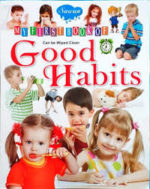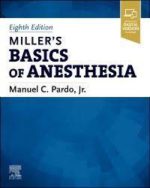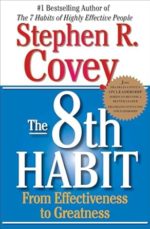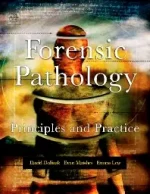-
Boyz Rule : Kite High
KShs 295.00Nick and Matt buy a new kite, but they soon find out that flying it isn’t as easy as it looks. A meeting with an angry bull leads them to strike a deal with the local girl aliens.
-
Awesome Friendly Adventure
KShs 995.00From the imagination of Wimpy Kid”s Rowley Jefferson comes an adventure of epic proportions! Join Roland and his best friend, Garg the Barbarian, as they leave the safety of their village and embark on a quest to save Roland”s mum from the White Warlock. Will our heroes survive? Find out in Rowley Jefferson”s Awesome Friendly Adventure!
-
Fall of Giants
KShs 400.00The first in Ken Follett’s bestselling Century Trilogy, Fall of Giants is a captivating novel that follows five families through the world-shaking dramas of the First World War, the Russian Revolution, and the struggle for votes for women.
A world in chaos.
1911, a thirteen-year-old boy, Billy Williams, begins working down the mines as George V is crowned king. The escalating arms race between the empire nations will put not only the king but this young boy in grave danger.A terrible war.
Billy’s family is inextricably linked with the Fitzherberts, the aristocratic owners of the coal mine where he works. And when Maud Fitzherbert falls in love with Walter von Ulrich, a spy at the German embassy in London, their destiny also becomes entangled with that of Gus Dewar, an ambitious young aide to Woodrow Wilson, and two orphaned Russian brothers, the Peshkovs, whose plan to emigrate to America falls foul of conscription, revolution and imminent war.A revolution that will change everything.
When Russia convulses in bloody revolution and the Great War unfolds, the five families’ futures are entwined forever, love bringing them closer even as conflict takes them further apart. What seeds will be sown for further tragedy in the twentieth century and what role will each play in what is to come?KShs 995.00 -
My First Book of Good Habits
KShs 295.00A set of beautiful picture books for your little one to take his first steps into the realm of language and learning. The books feature large and bold fonts along with bright and life-like colourful images to encourage the child to Associate words with pictures and develop his vocabulary. All the books in this series cover early learning concepts like ABC, colours, shapes, fruits, vegetables, number 1 to 100, farm animals & pets, wild animals, birds and transport. To form the building blocks of your child’s formative years of learning.
-
Miller’s Basics of Anesthesia, 8th Edition
KShs 14,700.00Long regarded as the undisputed leading text of its kind, Miller’s Basics of Anesthesia provides comprehensive yet concise coverage of both basic science and clinical topics in anesthesiology. Under the experienced editorial leadership of Dr. Manuel C. Pardo, Jr., the 8th Edition has been meticulously updated to reflect the latest advances in practice and important aspects of contemporary anesthesia care, including pathophysiology, pharmacology, regional anesthesia, anesthetic management, and special problems and patient groups. It remains the first learning resource of choice for anesthesia providers, including anesthesia residents and fellows, medical students, and student registered nurse anesthetists, and is also a valuable review tool for practitioners undergoing maintenance of certification or recertification.
-
Library Classification
KShs 6,290.00Library classification forms part of the field of library and information science. It is a form of bibliographic classification. It goes hand in hand with library cataloging under the rubric of cataloging and classification, sometimes grouped to gather as technical services. Classification systems in libraries generally play two roles.
-
Diary of a Wimpy Kid: Cabin Fever book 6
KShs 995.00Diary of a Wimpy Kid: Cabin Fever is a 2011 bestselling and award-winning children’s book and the sixth book in the Diary of a Wimpy Kid series, written by American author Jeff Kinney.[1] The book was released on November 15, 2011, the paperback edition was released on January 31, 2013, and was the fastest-selling book of 2011,[2] giving him the third-strongest opening-week sales for a children’s author.[3] Cabin Fever had a first printing run of six million copies, which Amulet Books stated was one of their most significant titles for that year.[4] In 2012 Kinney won a “Best Author” Children’s Choice Award from the Children’s Book Council for Cabin Fever.[5] The book received widespread acclaim from critics and is frequently said to be one of the best books in the series. The book was followed by 2012’s The Third Wheel.
-
The 8th Habit: From Effectiveness to Greatness
KShs 1,000.00In the more than twenty-five years since its publication, The 7 Habits of Highly Effective People has become an international phenomenon with more than twenty-five million copies sold. Tens of millions of people in business, government, and schools have dramatically improved their lives and organizations by applying the principles of Stephen R. Covey’s classic book.
The world, however, is a vastly changed place. Being effective as individuals and organizations is no longer merely an option—it’s a requirement for survival. But in order to thrive, innovate, excel, and lead in what Covey calls the “New Knowledge Worker Age,” we must build on and move beyond effectiveness. In this era of human history, our call is for greatness—holistic fulfillment, passionate execution, and significant contribution.
Accessing the higher levels of human genius in today’s new reality requires a change in thinking: a new mindset and a new skill-set—in short, a new habit. The crucial challenge of our world today is this: to find our voice and inspire others to find theirs. It is what Covey calls the 8th Habit. The 8th Habit is the answer to the soul’s yearning for greatness, the organization’s imperative for significance and superior results, and humanity’s search for its “voice.”
Covey’s books have transformed the way we think about ourselves, our purpose in life, our organizations, and about humankind. Just as The 7 Habits of Highly Effective People helped us focus on effectiveness, The 8th Habit shows us the way to greatness.
-
The Actions and Uses of Ophthalmic Drugs
Explore the pharmacology, formulations, and clinical significance of ophthalmic drugs, including the actions and uses of ophthalmic drugs. The Actions and Uses of Ophthalmic A Textbook for Students and Practitioners, Second Edition provides pertinent information in relation to concepts in pharmacology, the formulation and application of ophthalmic drugs, and adverse ocular effects of systemic medication. This book discusses the preparations used in contact lens practice. Organized into 17 chapters, this edition begins with an overview of the primary systems of drug classification according to their actions or effects, or on the basis of their chemistry. This text then presents a detailed discussion on the actions and uses of ophthalmic autonomic drugs. Other chapters consider the structure and function of the involuntary nervous system in the orbital region. This book discusses as well the two main classifications of ophthalmic drugs, namely, therapeutic and diagnostic. The final chapter deals with the clinical significance of medication-induced ocular adverse effects. This book is a valuable resource for ophthalmologists, students, and practitioners.
-
Forensic Pathology Principles and Practice
KShs 60,000.00Forensic Pathology is a comprehensive reference that uses a case-oriented format to address, explain and guide the reader through the varied topics encountered by forensic pathologists. Developed in response to a severe void in the literature, the book addresses topics ranging from medicolegal investigation of death to death scene investigation, forensic autopsy, and artifacts of resuscitation as well as complications of medical therapy, forensic osteology, forensic odontology, forensic photography, and death certification. The book includes various types of cases, including sudden natural death, asphyxia, motor vehicle collisions, death in custody, child abuse and elder abuse, acute psychiatric and emotional deaths, and pregnancy. It contains sample descriptions of pathological lesions which serve to aid pathologists in reporting their findings to law enforcement agencies, attorneys, and others involved in investigations of sudden death. The concepts outlined in the text are beautifully illustrated by large, colorful photographs. There are also “Do and Don’t” sections at the end of each chapter that provide guidance for handling the types of cases examined. This work will benefit not only experienced forensic pathologists, but also hospital pathologists who occasionally performs medicolegal autopsies; doctors in training; medical examiners; law enforcement personnel; crime scene investigators; attorneys; and fellows and students of the medical sciences.










